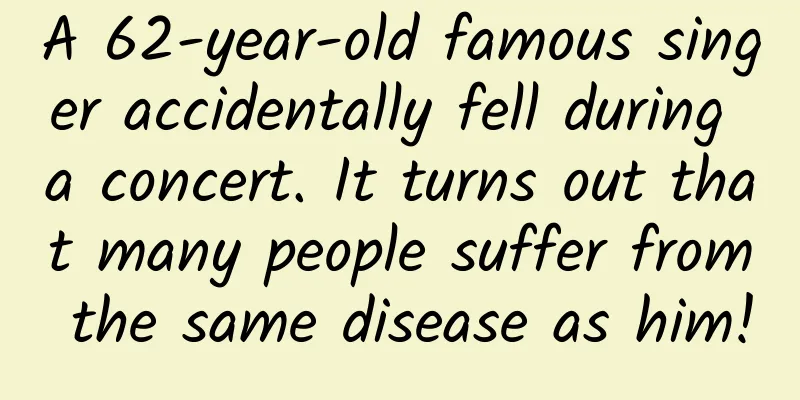Wake up to a hardened skin from a hot water bottle? Beware of the "low temperature killer"!

|
Have you ever relied on the warmth of a hot water bottle to fall asleep on a cold winter night? Be careful! This seemingly harmless warming device may be quietly harming your skin. Recently, in Ma'anshan City, Anhui Province, a 12-year-old girl woke up to find that the skin on her legs had become dry and hardened from the hot water bottle, suffering a third-degree burn! Not only that, low-temperature burns are very hidden, and they often erode your skin unconsciously. While you are enjoying the warmth, you may not be aware of the damage that is happening. Don't let the "warmth" of the hot water bottle become an invisible killer of your skin. Let us uncover the truth about low-temperature burns and protect the safety of ourselves and our families. What is a low temperature burn? Low-temperature burns refer to a type of injury in which the body is exposed to a heat source that is not too high for a long time, causing heat accumulation and resulting in burns to the skin and subcutaneous tissue at the contact site. It is generally believed that a 70°C heat source in continuous contact with the skin for 1 minute can cause damage to the entire epidermis; a 44°C heat source in continuous contact for 6 hours can cause irreversible damage to the basal cells of the skin. This type of burn is different from a high-temperature burn. There is no obvious pain when you are burned, and at most you just feel warm. Therefore, many people suffer from low-temperature burns without knowing it. Although low-temperature burns do not cause severe pain immediately, the consequences are quite serious. Since burns occur slowly, they often cause deep tissue damage, which is often manifested as dry and hardened skin, or even blisters and ulcers. Low-temperature burns are deep burns, and in most cases they leave scars. If not handled properly, they may also lead to infection, making the wound unable to heal for a long time, and seriously affecting the quality of life. The following groups of people need to pay special attention to the risk of low-temperature burns: Infants and children: Due to the characteristics of their skin structure, children's skin is more fragile than adults', and their sensitivity and tolerance to heat are lower. In addition, children have limited expressive ability and may not be able to express discomfort in time, making low-temperature burns difficult to detect. Elderly people: As they age, their skin sensory function declines and their ability to perceive heat decreases, making them more susceptible to low-temperature burns when using heating equipment. Diabetic patients: Diabetic patients may have decreased sensation due to peripheral neuropathy and weakened response to thermal stimulation, thereby increasing the risk of low-temperature burns. People with peripheral blood circulation disorders: such as patients with Raynaud's phenomenon, vasculitis and other diseases, due to poor blood circulation, the skin's ability to perceive heat and dissipate heat is reduced, making them prone to low-temperature burns. These special groups of people should be extra careful when using warm products such as heat packs and hot water bottles, and take appropriate precautions to avoid low-temperature burns. Once a low-temperature burn occurs, the following measures should be taken immediately: Remove heat source immediately: Stop contact with heat source quickly to avoid further aggravating burns. Cold compress treatment: Use clean running cold water to rinse the burned area. It is generally recommended to rinse for 15 to 30 minutes to lower the skin surface temperature and reduce further damage. When applying cold compress, be careful not to use ice cubes to directly contact the skin to avoid frostbite. Clean the wound: Gently wash the burned area with clean, cool water, avoiding the use of soap or other substances that may cause irritation to reduce the risk of infection. Disinfection and sterilization: After cooling down, use iodine tincture or saline solution for disinfection and sterilization to prevent wound infection. Apply appropriate amount of medicine: Under the guidance of a doctor, apply an appropriate amount of burn ointment, such as Lithospermum officinale ointment, Jingwanhong, etc., which can effectively relieve pain and promote the repair of wound cells. Protect the wound: Gently cover the burned area with sterile gauze or clean cloth to avoid bacterial infection, and keep the wound dry, which will help prevent infection and promote healing. Avoid squeezing blisters: If blisters form, you need to go to the hospital for further treatment. Do not pick them yourself to avoid further infection. Seek medical attention promptly: In medicine, the severity of burns is usually classified according to the three-degree four-point method, namely, first-degree, superficial second-degree, deep second-degree and third-degree burns. Among them, second-degree burns refer to burns that reach the dermis, which can be divided into two types: superficial second-degree burns and deep second-degree burns. Superficial second-degree burns are characterized by severe pain and hyperesthesia of the injured skin, with blister formation. After the blisters are peeled off, the wound surface is evenly red, moist, and edematous; deep second-degree burns are characterized by dull pain sensation in the injured skin, with or without blisters, pale base, and occasional red spots. For low-temperature burns of degree II or above, it is recommended to go to the hospital for treatment as soon as possible. The doctor can provide local disinfection, dressing changes and necessary anti-infection treatment. |
>>: Acne vulgaris: a "sign" of puberty or a health warning?
Recommend
If you’ve climbed a mountain, how can you not understand machine learning?
In today's booming artificial intelligence, i...
Start a course - Artificial Intelligence Core Competencies Phase 7 - NLP Major
Kaikeba - Artificial Intelligence Core Competenci...
Can heating food wrapped in plastic wrap cause cancer? Experts respond
Recently, the Beijing Association for Science and...
Thoughts on a TV’s popularity: 3 key words for marketing and self-propagation
If time goes back a few decades, we might still b...
Talk about user cognitive cost!
Let me first explain the general logic. Professor...
WeChat bans XiaoIce, Microsoft's mobile Internet surprise fails
[[127934]] On May 29, Microsoft launched its prod...
Following orders and serving others...When will robots truly replace human labor?
In today's era, technology is developing rapi...
On World Pangolin Day, can we wait for good news about pangolins?
Today - the third Saturday in February - is World...
World Economic Forum: Driving Effective Transformation of Energy Systems 2020 Report
The report comprehensively considers the current ...
Down jacket warning map: More than three quarters of the country needs to wear down jackets
The cold wave is coming again! Currently, the fif...
A secret that I am reluctant to tell my peers: companies with this kind of brand name are the most valuable
Dear friends, please forgive me for using a catch...
Avita 12 has been delivered nationwide, accompanying users to "enjoy their journey". Orders and deliveries have been a double harvest, accelerating the response to user expectations
On December 10, 2023 (Shanghai), the delivery of ...
Is there cow urine in Van Gogh's famous work "Starry Night"?
When talking about Van Gogh's works, many peo...
Price inquiry for customized Loudi Metallurgical Mini Program. How much does it cost to customize Loudi Metallurgical Mini Program?
How much does it cost to customize the Loudi Meta...
Ideas for building a Baidu promotion account, how to build a Baidu search engine account?
Many friends don’t know where to start when they ...









